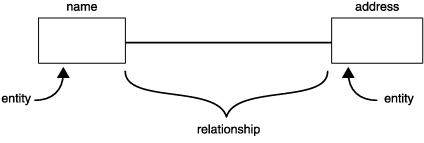Home |
Previous Page | Next Page Basics of Database Design and Implementation > Building a Relational Data Model >
Now you know and understand the entities and relationships
in your database, which is the most important part of the relational-database
design process. After you determine the entities and relationships,
a method that displays your thought process during database design
might be helpful.
Most
data-modeling methods provide some way to graphically display the
entities and relationships. IBM Informix documentation uses the E-R diagram
approach that C. R. Bachman originally
developed. E-R diagrams serve the following
purposes. They:
- Model the informational needs of an organization
- Identify entities and their relationships
- Provide a starting point for data definition (data-flow diagrams)
- Provide an excellent source of documentation for application
developers as well as database and system administrators
- Create a logical design of the database that can be translated
into a physical schema
Several different styles of E-R diagrams
exist. If you already have a style that you prefer, use it. Figure 12 shows a sample E-R diagram.
Figure 12. Symbols of an Entity-Relationship Diagram
In an E-R diagram, a box represents
an entity. A line represents the relationships that connect the
entities. In addition, Figure 13 shows
how you use graphical items to display the following features of
relationships:
- A circle across a relationship link indicates optionality in
the relationship (zero instances can occur).
- A small bar across a relationship link indicates that exactly one instance
of the entity is associated with another entity (consider the bar
to be a 1).
- The crow's-feet represent many in
the relationship.
Figure 13. The Parts of a Relationship in an Entity-Relationship Diagram
Home |
[ Top of Page | Previous Page | Next Page | Contents |
Index ]


